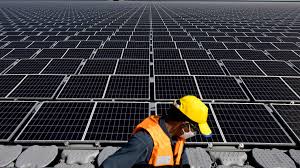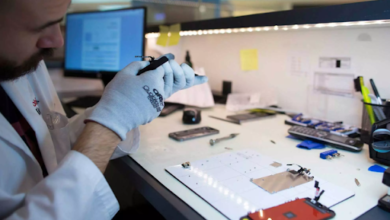The Terminal Electrification and Clean Decarbonization Solution under China’s Carbon Neutrality Commitment

Scrap Steel Processing + Graphite Electrodes
Steel smelting is a major contributor to carbon emissions in the industrial sector. According to calculations by CheBai Knowledge Base (China Hydrogen Industry Development Report 2020, released in October 2020), the production of one ton of steel through the traditional, low electrification, long process (blast furnace-basic oxygen furnace) results in 2.1 tons of carbon emissions. In contrast, the high electrification, short process (electric arc furnace) combined with clean electricity generates only 0.6 tons of carbon emissions per ton of steel.
Currently, long processes dominate steel refining in China, with only a 10% penetration rate for short processes in 2019. In comparison, developed economies overseas had penetration rates of 70%, 41%, and 25% for electric arc furnace steel in the United States, European Union, and Japan, respectively, in 2019. The cost of a crucial raw material for electric arc furnace steelmaking—scrap steel—poses a significant obstacle to the penetration of short processes, especially considering the relatively inadequate supply and high cost of scrap steel in China compared to developed economies abroad(quotes from medcom.com.pl.
According to the Ministry of Industry and Information Technology’s “Guidance on Electric Arc Furnace Steelmaking” released in September 2019, during the 14th Five-Year Plan, the electrification rate of electric arc furnace steelmaking will be increased to 20%. This will be achieved by transforming long-process steel plants into short processes, optimizing the layout of short-process steelmaking capacity, reducing unit energy consumption by 10%, increasing the proportion of scrap steel in the national steel industry to 30%, and enhancing the supply capacity of scrap steel to around 300 million tons.
The increase in the electrification rate of electric arc furnace steelmaking will directly drive the growth of the scrap steel processing equipment market. Additionally, the consumption of graphite electrodes, especially high-power graphite electrodes, throughout the entire smelting process in electric arc furnace steelmaking is expected to resonate in both supply and demand, given environmental restrictions on the supply side and the push for increased penetration of electric arc furnace steel on the demand side.
Hydrogen Energy – Fuel Cells
Hydrogen energy and fuel cells represent challenging solutions in the non-electrification sector. Their main applications include:
In the transportation sector, commercial vehicles, shipping, aviation, and other long-distance, heavy-duty transportation equipment face challenges in adopting electric batteries for electrification. Hydrogen fuel cells are a superior alternative, especially in the commercial vehicle sector where hydrogen fuel cell technology is already well-developed.
In the industrial sector, using hydrogen gas instead of natural gas in steel smelting can further reduce emissions in current electric arc furnace steel technology. Additionally, hydrogen energy has the potential to replace fossil fuels in the chemical industry in the future (hydrogenation industry). Although there is no central-level industrial planning at present, the “2020 National Economic and Social Development Plan” includes the formulation of a hydrogen energy industry strategic development plan, and active participation by local authorities is evident, with over 10 provinces and direct-controlled municipalities having already released industry plans.
The China Hydrogen Energy Alliance predicts that the hydrogen energy-fuel cell industry in China will experience a Compound Annual Growth Rate (CAGR) of 22% from 2020 to 2025. The numbers for hydrogenation stations, fuel cell vehicles, and fuel cell systems are expected to have CAGRs of 43%, 71%, and 35%, respectively.
Specifically, according to the China Hydrogen Energy Alliance’s forecast, under the baseline scenario, the market share of hydrogen-powered commercial vehicles is expected to rise from the current 0.02% to 7% by 2030, with a CAGR of 52% from 2020 to 2030. Under optimistic circumstances, the market share could reach 13% by 2030, with a CAGR of 62% from 2020 to 2030. In 2050, hydrogen fuel cell commercial vehicles are expected to become mainstream, with market shares of 37% and 70% under the baseline and optimistic scenarios, respectively.
Hydrogen Steelmaking and Hydrogen Chemical Technology have a lower maturity compared to hydrogen fuel cells, making them longer-term development goals. Electric arc furnace steelmaking combined with zero-carbon electricity can reduce the carbon emissions of one ton of steel from the long process’s 2.1 tons to 0.6 tons. If zero-carbon electricity is used to electrolyze water to produce hydrogen (known as “green hydrogen”), and green hydrogen replaces natural gas as a reducing agent, then the steelmaking process can achieve zero-carbon emissions. The hydrogen steelmaking process is currently being pioneered and making progress in Japan, Sweden, and Germany.
Biofuels
In addition to hydrogen fuel cells, biodiesel can also reduce carbon emissions from commercial vehicles that are challenging to electrify. Biodiesel has performance characteristics similar to petroleum diesel and can be used directly or blended in any proportion with fossil diesel for internal combustion engine combustion without requiring modifications to the original diesel engines, refueling equipment, storage equipment, and maintenance equipment.
Europe leads the world in the promotion of biofuels. The European Union’s Renewable Energy Directive (2009) requires all member countries to achieve a 10% blending ratio of biofuels in the transport sector by 2020. The revised version in 2018 further requires a 14% blending ratio of biofuels in the transport sector by 2030.
Currently, there are no top-level design and mandatory blending regulations in place in China. However, biofuel companies in China are enhancing competitiveness through technological improvements and utilizing waste oils, such as gutter oil, to produce biodiesel. Under the European Union’s Renewable Energy Directive, they can enjoy double counting (waste-produced biofuels follow the double counting principle), demonstrating a certain level of global competitiveness. They are expected to benefit from policy dividends in developed markets such as Europe, the United States, and Japan.
Prefabricated Construction
Construction is a significant source of carbon emissions in the building sector. An effective measure to reduce carbon emissions in construction is to increase the proportion of prefabricated construction(sources from medcom.
According to calculations by the Ministry of Housing and Urban-Rural Development, the carbon emissions per square meter of prefabricated housing are nearly 30kg lower than traditional housing, mainly due to the reduced consumption of insulation materials and cement mortar.
In comparison to developed economies overseas, there is significant room for improvement in the penetration rate of prefabricated construction in China. In 2019, the penetration rate of prefabricated construction in China was 13%, while it is generally 70-90% in developed economies overseas.




